Matthew Murrie's Blog, page 14
June 8, 2020
What If We Create the School of Tomorrow, Today?
What if before we create the school of tomorrow, we need to know what questions to ask?
https://youtu.be/3NlRkFLmW2UVideo produced by the
,What if, by taking a Curiosity-Based Learning approach to education we can connect learning from core content areas to collaborative actions that drive deeper learning and real-world impact? And, what if, in doing so, we create learning experiences that begin with curiosity and follow along pathways of empathy and action that not only directly impact our local communities, but create life-long learners contributing to a better world?
,What if those questions are no longer hypotheticals? What if we're doing it?!
,What If Curiosity is collaborating with schools, governments, experts, and organizations around the world to use curiosity to not only reimagine education, but create a new version of education: the School of Tomorrow, Today.
,What if, in addition to creating the School of Tomorrow, Today, we don't only do it today, but create it the way school should have been created from the start: collaboratively, across a diversity of disciplines, ages, and cultures.
,The School of Tomorrow, Today project is designed around digital learning experiences that take a Curiosity-Based Learning approach to introducing the core content to be used to fuel future learning, frame challenges, and inform contributions to constructing the School of Tomorrow, Today.
,,Content Areas
,Entrepreneurship
,Human-Centered Design
,Coding
,Leadership
,Writing, Communication, & Storytelling
,Mindfulness
,STEM/STEAM
,Model UN & Sustainable Development Goals (SDGs)
,The initial learning experience consists of a 1-2 hour Curiosity Based Learning introduction for each of the Content Areas, followed by an additional 1-2 hours of follow-up learning and activities. This is free for anyone and can be done live or asynchronously. ,,The project is designed to support educators, parents, and community members with Professional Development training to power the educational experiences they create.
,After the Curiosity Based Learning introduction, participants have the opportunity to connect with Key Partners from around the world to dive deeper into the areas they are most curious about to learn more and take collaborative actions. The outcomes of their learning and actions will then be shared with interested organizations to explore how they can support participants directly in creating their visions of the School of Tomorrow.
,,Project Outcomes
,Create the school of tomorrow, today
,Create actionable solutions for the United Nations’ Sustainable Development Goals (SDGs)
,Create student entrepreneurs
,Create more equitable learning spaces and experiences
,Contribute to the conversation of who we are as a planet and where we are going
,Identifying and requesting the resources required to create this new version of education
,Professional Development and continued training in Curiosity Based Learning and other novel processes and methodologies for teaching and learning (such as
,Connection to a global network of key partners for continued collaborations
What if creating the school of tomorrow, today is the easy part? Making sure we're asking the right questions is the tricky part. We've started by assembling the best--and growing--team on the planet! They've been fantastic in kicking us off and guiding us forward, but in order to truly crowdsource curiosity, we need more questions from more (different) people, like you!
How can you participate? What if you start by doing something as simple as
June 7, 2020
What If a Knee Is Needed to Take a Step Forward?
,What If Colin Kaepernick had knelt on the first snap of the game? Get curious with the President/Founder of
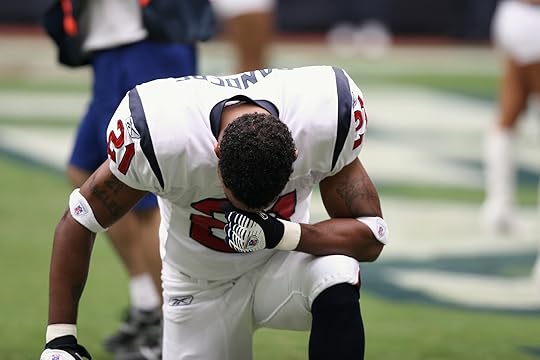
In 2016, then San Francisco 49ers QB Colin Kaepernick began protesting police brutality during the national anthem at games. He refused to stand to honor America while the anthem was sung. He remained seated on the sideline at first and then began taking a knee later in the season. What if Kaepernick had taken a knee on the first snap under center instead of kneeling during the national anthem?
Taking a knee on the first play would have gotten attention because the cameras would have been on the action. The networks couldn’t have turned the cameras off like they have done now during the national anthem. They would have to show it and the broadcasters would address it.
Honestly, I have Kaepernick fatigue. The narratives both political extremes have twisted Kaepernick’s protest into has made me tune out to it for years now but see an opportunity to redeliver his message. What if it couldn’t be twisted into motivation for riots and would fuel social and political change? What if it couldn’t be twisted as being “anti-American”?
Colin Kaepernick’s message is worth hearing and taking action. I am pro-police and believe 99% of them are great officers. Unfortunately the past has shown they aren’t all great and we need a better way to handling the bad ones so we can have a better society and prevent unnecessary violence and death.
Kapernick’s message been perverted so many times so people can capitalize on it by raising money for their different causes yet hasn’t far more negative associated with it than positive now.
What if we all stood for the anthem and showed we’re together as Americans? Then as soon as we’ve saluted the flag and our country we address the issues facing our society. What if there couldn’t be a narrative that players taking a knee is disrespecting our country?
The active NFL players can continue Kaepernick’s message by taking action with peaceful protests on the field. Imagine a Sunday afternoon where on the first play of the game, all 22 players kneeled in unity. That would send a message loud and clear. Kneeling during the anthem turns millions off and they simply won’t listen to your message because of it.
What if the NFL used its power to create an organization to support police and set up programs to improve law enforcement in communities nationwide with current and former NFL players involved? It’s over as an NFL player for Kaepernick but he could bring value to an organization trying to improve police relations within a community.
Let’s take a new approach to raise awareness and then take the next step to better our police forces and communities nationwide.
Matt Fischer
June 3, 2020
Manifest Curiosity Part XI: Problem Pizza
This post is the first in a series of posts from
,,Problem Pizza
,Whether you are solving a problem your business faces, taking action to solve a global problem, or a blank screen you need to turn into an essay is your problem, the Curiosity Based Learning process, Problem Pizza turns a tasty food into a useful tool in providing structure, organization, process, and easy to apply actions the problem on your plate.
,Topic (crust): The first step is to consider the characteristics (e.g. it surrounds the pizza, is underneath the pizza and holds it up, is a part of every bite: it’s everywhere) of pizza crust and explain the “topic” of a piece of writing is similar: it’s what it’s all about; the topic can be found in every paragraph, sentence, and sometimes directly in the title.
,Thesis (sauce): Next comes the sauce, arguably where the bulk of a pizza’s flavor comes from. It’s not quite everywhere like the topic, but it has a sizable spread over the pizza. This is like the thesis of a paper. A good thesis makes a comment on a topic (see, that topic is EVERYWHERE--even in the thesis!) and is then proven throughout the rest of the paper, thereby flavoring the feel, format, and taste it leaves the reader throughout.
,Major Details (cheese): On top of that sauce is sprinkled the cheese, similar to how a good writer will sprinkle details to help prove or accent the flavor of the thesis. Major Details are used to organize supporting paragraphs. They are more general than minor details and are often stated early in paragraphs to connect it and the minor details connected to it all back to the thesis. The more clearly the writer makes these connections, the better the reader can agree with the taste of the thesis.
,minor details (toppings): minor details are all the super specific information (i.e. people’s names, dates, studies, quotes, etc.) that clarify what the Major Details are and how they’re being used to support the thesis. These are like the specific toppings and spices put on pizza for that little extra.
,Patterns of Organization (POO) (box): While it’s great to think outside of the box, it’s still helpful to write inside of different types of boxes so people can best enjoy your writing. Who wants to eat a pizza out of a shoe box? Writers use different Patterns of Organisation that is reflected in the transition words they use to connect all those toppings, cheese, and sauce together. Often times, they will even provide their readers with the Pattern of Organization in their thesis. The better a reader can understand the type of organization the writer is following, the easier it becomes to understand the thesis and make predictions while reading.
,Examples of some common Patterns of Organization are: Compare and Contrast, Cause and Effect, Listing, Classification, Summary, and Description.
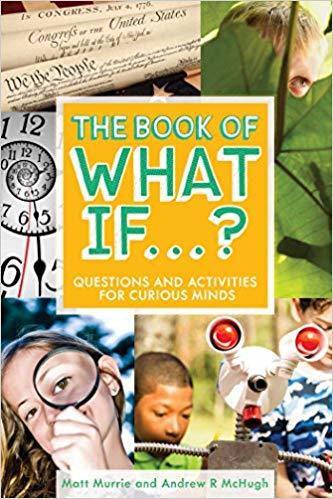
,Stay Curious with Part XII: ,Steps in Between
,Curiosity Based Learning
What If We Replaced History Books with Ben & Jerry's?
,“,...if we ever want to have an honest accounting of who we are as Americans, we can’t pick and choose what we wish to remember.,”
,Ben & Jerry’s, “
,Did I have you at Ben or Jerry? Honestly, though, who doesn’t think the thought of studying history could use a little ice cream?
,But this idea has little to do with ice cream and even less to do with making history go down a little sweeter. It’s not a total bummer, either: it’s just honest.
,What if, what Ben & Jerry have been doing for years to use their platform--not product--to promote an education long overdue is deserving of a permanent place on what and how we learn?
,If that last paragraph has you a little hazy, take a quick look at
,.. now that you’re back, I’m open for thoughts or examples on how any current history textbook in the United States is better than Ben & Jerry’s blog.
,Some additional questions while you’re digging up evidence for traditional textbooks:
,* What would be the ramifications if educators teaching history never opened another textbook until their students completed the contents of Ben & Jerry’s blog?
,* The same way Ben & Jerry’s gives readers direct access to organizations providing more information and opportunities for actions, what if all learning about history were connected to a consequence today?
,* What if impassioned learners could continue their learning to take more informed actions rooted in contexts of history and empathy that empowers them to be makers of history?
,* If an ice cream blog can provide more relevant, succinct, actionable, and affordable
learning experiences for a wider audience than traditional textbooks:
,Why are we still using traditional textbooks for learning?
,Why are we paying for textbooks?
,Who is demanding the continued use of traditional textbooks?
a. ,Students
b. ,Teachers
c. ,Parents
d. ,Administrators
e. ,Textbooks
,Fortunately, for the curious, just as Ben & Jerry's can be much more than ice cream, we can be much more than educators, learners, and community members. We can be collaborators in creating the School of Tomorrow.
,Nobody was assigned coming back to "school as usual" for homework when COVID-19 wrecked our "business as usual" lives.
,What if it is 100% up to us to make sure we never return to school as we knew it, but school as we make it, even if that means serving Ben & Jerry's for History.
May 27, 2020
Manifest Curiosity Part X
,This post is the first in a series of posts from
,,100 Chances
,There are a couple of ways (so far) to do the 100 Chances process. Both start with a specific problem and a list of 1 - 100.
,One way is to fill out each number with the name of a person to contact or action to take in order to address or find a solution to your stated problem. Then, go down the list and contact or do what is listed. More likely than not, before you hit number 100 on your list you will: a) discover a solution to your stated problem or b) identify a bigger problem to solve c) uncover a more valuable action to take whether or not it relates to the problem you stated initially or d) all of the above.
,Another way is to fill in an action to take or person to contact for #1 and leave the other 99 blank. After each contact or action taken, answer the set of questions before identifying and contacting or doing the next step:
,Something valuable I learned:
,Something I need to change:
,Something I should keep doing:
,Who to contact/what action to take next:

,Stay Curious with Part XI:
,Curiosity Based Learning
May 20, 2020
Manifest Curiosity Part IX: Curiosity Q&A
,,This post is the first in a series of posts from
,,Curiosity Q&A
,Curiosity Q&A is… a process that drives actions over answers… it can be initiated in a minute and can last anywhere from another minute to all day (or longer).
,Question: Question about or related to any topic or curiosity; can also be taken directly from ,The Book of What If…?
,Action: A quick action to be taken to demonstrate understanding and/or exploration of the question.
,Keep in Mind: Short share of any relevant information for the exploration of the question or execution of the action.
,Deeper Learning: Share any tangential information that either opens up or deepens one’s thinking about the question and/or action.
,Challenge: Whereas the “Action” is typically something that can be done immediately, the “Challenge” can be something to extend the learning and/or actions surrounding the curiosity for additional activities and insights.
,,Example of Curiosity Q&A from The Book of What If…?
,Question: What if broccoli tasted like chocolate?
,Action: Imagine a world where broccoli does taste like chocolate: open a restaurant in this world; make sure you include a menu, name of restaurant, and any other details you'd like to add.
,Keep in Mind: Some people love that broccoli tastes like broccoli; not only do some people enjoy the taste of broccoli, could you imagine eating soups, salads and other dishes (like beef and broccoli) in which broccoli is an ingredient now becoming chocolate flavored?!
,Deeper Learning: Why doesn't broccoli taste like chocolate? See what you can discover about why broccoli tastes like broccoli and chocolate tastes like chocolate.
,Challenge: What if flavors were more democratic? Create a short campaign speech campaign poster persuading the voting public to vote on the change of flavors for a food.

,Stay Curious with Part X: ,100 Chances
,Curiosity Based Learning
What If Robots Looked Like Humans?
What if robots looked like humans and animals?
What: What would you do if you discovered someone you knew was actually a robot? Write a text to them to tell them how you feel about this discovery.
Who: Out of everyone you know, who do you think might actually be a robot? Write a diary entry sharing your thoughts why?
How: How could you test if someone where a robot or human? Write out the instructions to a test to use to test is someone is a human or robot?
When: Do you think the first robot will become the President of a country? Create a campaign poster for a robot running for President.
Where: Do you think robots who look like humans would live and work? Make an advertisement targeted for robots looking for work or a place to live.
Why: Why do you think robots are necessary for humans? Write a short poem about a child and their robot.
Huh?: What if you found out that you are a robot? Who would be the first person you would talk to? Write a short letter sharing your news with them.
Wow!: Why would zoos of robots that look and act exactly like "real" animals be better to visit than the zoos we have today? What are the top three things you would like to see replaced by robots? Give a sentence reason why for each.

May 18, 2020
What If We Use Curiosity to Create the “New Normal”?
,What if we use curiosity to create the "new normal" of education in a COVID-19 world.
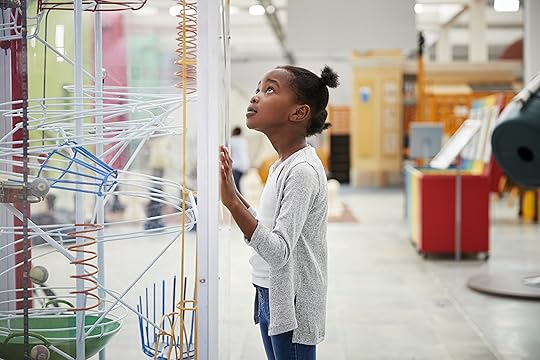
,If you asked me once: "why is curiosity the most critical component in learning?"
,I'd reply: duh!
,If you asked me twice, I'd ask you:
,What if curiosity is the linchpin in designing relevant, learner-centered experiences grounded in empathy, discovery, and global collaboration with a bias toward action?
,What if curiosity can be used to explore everything from the unknown to the what's next?
,What if curiosity ensures learning is done without ownership and encourages more self-directed learning experiences?
,What if curiosity is the only way the "new normal" of education will be anywhere close to where it needs to be?
,What if, whether you're wrapping up your school year, in the middle of it, or already anxious about what next year will look like, what if you get curious with us as we explore a number of ways "normal" might look, such as:
,What if there are no teachers?
,What if there is no school (building)?
,What if there is no school?
,What if there are no administrators?
,What if every educator is an entrepreneur?
,What if there is no homework?
,What if there are no exams?
,What if you're a parent, you're a teacher?
,These eight curiosities are proclaiming neither endorsements, nor prophecies; what if they are starting points of collaborative design to create the school of tomorrow, today. Because we've all been waiting to long.
May 15, 2020
Conquering COVID-19 with 17 SDGs: #2 Zero Hunger
What if you use your curiosity to help conquer COVID-19 and 17 SDGs? Up next? Sustainable Development
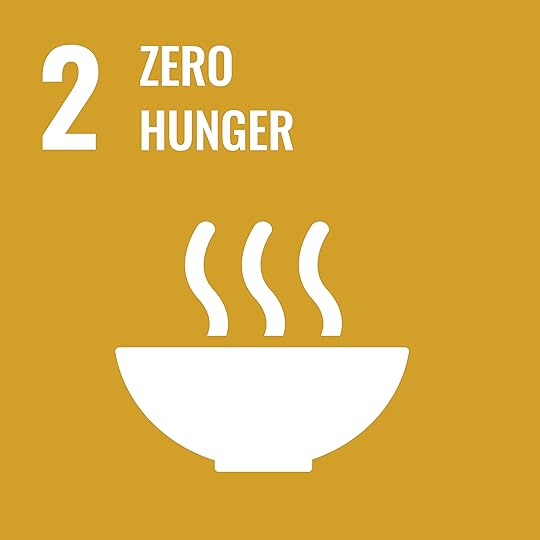
What: The goal is to end hunger by everyone on the planet having access to enough safe and nutritious food to feed them all year.
Who: ,This goal specifically focuses on helping hungry people in vulnerable situations like infants and people living in poverty.
How: One of the ways this goal seeks to achieve ending the world of hunger is to. "...double the agricultural productivity and incomes of small-scale food producers, in particular women, indigenous peoples, family farmers, pastoralists and fishers..."(
When: In the most recent count in 2017, there were an estimated 821 malnourished people living on our planet.
Where: In large parts of the developing world, 80% of their food comes from small farms.
Why: Hunger matters both to individuals and the human species; when someone is hungry or malnourished, it is difficult for them to provide for their families or contribute to their communities, increasing the challenges of achieving the goals like education and health.
Huh?: According the the
Wow!: Think about the last time you were really hungry. How did you feel? How was your attitude? How did you feel about doing work or speaking with other people? Now, imagine a world where nobody ever felt that way. Pretty cool, huh?
How SDG #1, Zero Hunger connects to COVID-19:
,Hungry and malnourished people can be more susceptible to getting sick or catching diseases like COVID-19; access to healthy food is critical to staying healthy during quarantine, and gives our bodies better chances of fighting off viruses.
Using Curiosity to connect COVID-19 with SDG #2 Zero Hunger:
What if, everybody viewed food as medicine? What if, instead of calling it "food" we called it "medicine"? How would that affect what you eat? How would that change how you think about people without it?
Call-to-action challenge to take on ending hunger and COVID-19: Small-food farms is one of the ways people are working to end the world of hunger; during COVID-19 quarantine, many people took the opportunity to start small gardens in or around their homes. What if you start a garden (or a farm!): What foods would you start growing at home if you could start a garden? Are there any foods you could grow that could help you or others survive COVID-19 or other viruses? Can you grow any foods you could give away to help end hunger?
,You can also take the
,Keep conquering COVID-19 with the SDGs with SDG #... coming soon!

Curiosity Based Learning
What? to Wow!
COVID-19 A-Z
Sustainable Development Goals (SDGs)
May 14, 2020
Curiosity Based Learning for Parents 1.0
What if, there were a simple learning process both parent and child can perfect in minutes, can be reused for any subject or assignment, and can be done every day with every new focus of learning or objective?
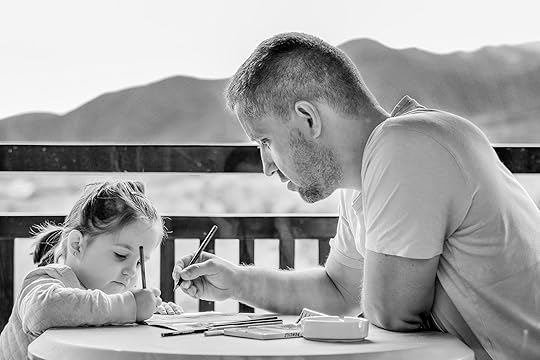
Curious how Curiosity Based Learning works for parents turned remote learning educators?
To use Curiosity Based Learning, I recommend two things to start:
1) choose a text, topic, or learning objective for the day... or visit the Library of Curiosity
2) introduce your kids to the What? to Wow! process (I've got tons of short videos and write-ups on What? to Wow! and most blog posts/activities I'm sharing are shared explicitly through What? to Wow!)
https://youtu.be/wL_jZOQexyw
Once you are all familiar with What? to Wow! you can use it to introduce something new to learn or to see how much was learned.
To start, present the new reading/content/learning objective/s for the day, week, unit through What? to Wow! and then ask your kid to respond to their reading/interaction with content or learning objective/s with a What? to Wow! (total of 8 sentences) of their own.
From that initial What? to Wow! you can:
a) ask your kids to expand with detail/supporting sentences for each of their eight What? to Wow! sentences
b) point them in new (personal, relevant, etc.) directions of additional learning
c) connect it to and/or prep the next lesson or activity
d) ask your kids to create an new What? to Wow! of questions (as opposed to answers) they have about the reading/content/learning objective
For example, in the Superheroes of Chemistry blog, I am using the book The Elements as the "text" and I introduce it, the class subject (chemistry/science), and the Curiosity Based Learning Process we'll be using throughout the entire unit (in this case) in the first (2 min read) post: "What If Chemical Elements Were Superheroes?"
After that, each element--er, superhero!--gets a two, single day/lessons, one for each of Curiosity Based Learning process introduced on Day 1. So, Hydrogen gets two blog posts/days with two, different Curiosity Based Learning processes (What? to Wow! and Curiosity Q&A).
You can see in "Curious about What If Hydrogen Were a Superhero?" that you can both link to additional content you want your students to explore/learn from and include activities ("homework") for them to do and share with you for evaluation.
All of the Curiosity Based Learning lessons posted in the Library of Curiosity are designed to be flexible and expandable: a full day of activities that can be done all at once, or broken down into individual days/activities of their own.
Of course, Curiosity Based Learning works when it's being created by those most closely connected to their learners' curiosity!We are constantly adding lessons/activities to the Library of Curiosity, but if you have any specific books, topics, learning objectives, etc. we'd be stoked to make some just for you and your kids. So, if there are any other ways I an help out, just let me know: Matt@WhatIfCuriosity.com
Stay curious!




